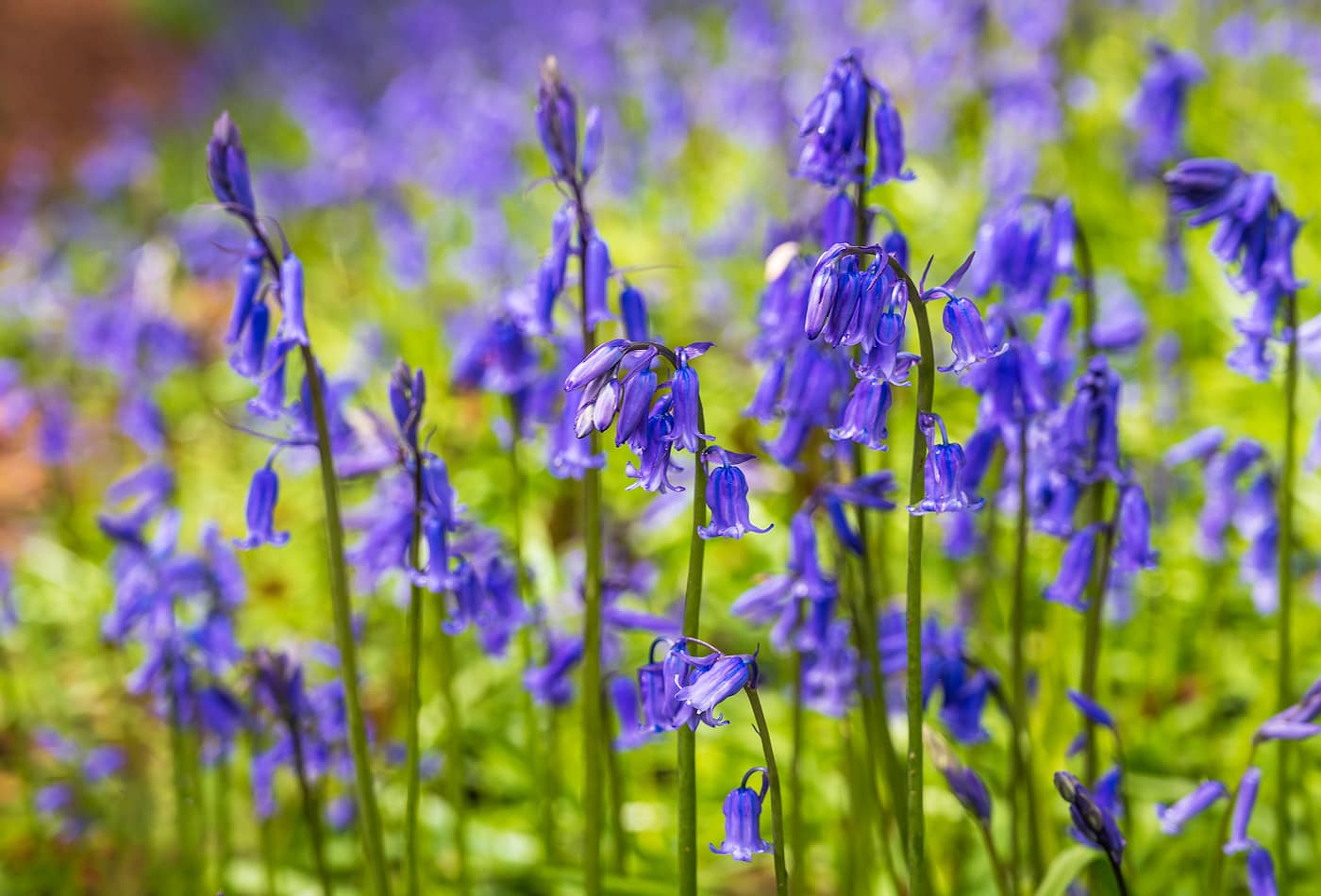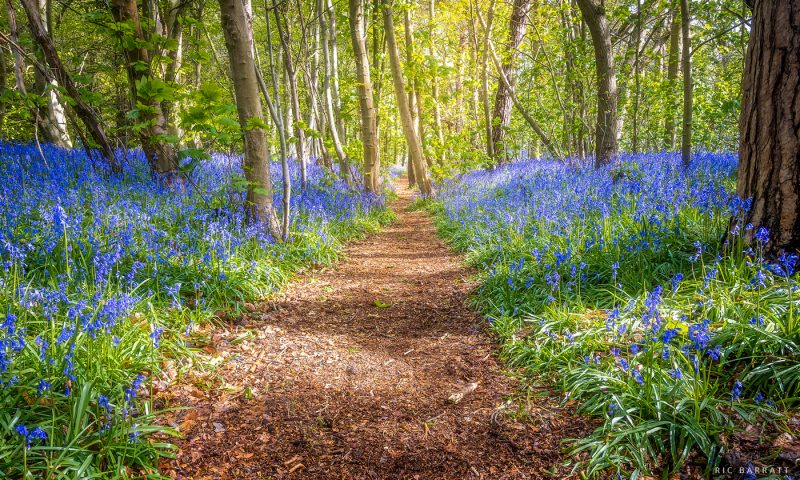It is always a joy to see and photograph a blanket of bluebell flowers in ancient woodland. The vivid blue hue of a sea of “Britain’s favourite flower” creates one of nature’s dazzling spectacles. However, photographing bluebells is not always easy: they tend to grow in dark, woody areas which often limits the amount of light available. They are also small and delicate, which means they can move around a lot in the breeze. Here a few tips which you might find useful when photographing these beautiful flowers.
Research local areas where bluebells grow abundantly
Bluebells typically grow in old woods or on the edges of fields and lanes. They also sometimes grow in open spaces. Do some research online to see if there are any local spots where the flowers grow abundantly.
The National Trust provides a list of properties where bluebells grow. Some of these areas may required payment for car parking and/or entry (unless you are already a member of the National Trust). See the website for more information.
Pick the right date
Bluebells usually bloom between mid April and mid May, so its important to visit the wood around the optimum time. There is usually a short window when the flowers are fully grown and at their most numerous. If you visit too early in the season then many of the flowers might not yet be fully grown, in which case you may want to check again a few days later. If you leave it too late in the season then the flowers could have gone over and will be past their best (or may have been trampled).
Visit early or late in the day
Woodland areas with lots of bluebells tend to attract many people, so if you are looking for a little solitude it is worth visiting early in the morning or late in the afternoon. Visiting early can often result in a desirable morning mist floating around the flowers. This helps create a mysterious and otherworldly scene.
Pay attention to the weather
Photographing any woodland scene requires careful consideration of the natural light. Harsh, bright, midday sun creates a lot of contrast which can be difficult to control. On the other hand, if the sky is too overcast then the scene can look washed out and flat. My preferred weather is light cloud which diffuses the sunlight just enough to create a moderate level of contrast in the image. Visiting after a rain shower means the flowers will be covered in tiny attractive water droplets. Also try to avoid windy days as this can cause the flowers to move around too much.
Try getting low to the ground
We are accustomed to seeing bluebells from above, so try getting closer to the ground for a different perspective. This also condenses the appearance of the flowers in the image and helps give the desirable “blanket” effect. For something different, you could even try shooting the bluebells from underneath. You could also try taking some close-up/macro shots.

Bring a tripod
Woodlands can be dark places, especially on overcast days, early in the morning or late in the evening. You might not need a tripod, but it is better to have it with you in case you do. If you don’t own a tripod you could try a small bean bag or other support which can be used to safely position your camera off the ground.
Include a focal point in your image
Try to incorporate a focal point into your image, such as a pathway, a large stone, or a fallen branch. This will break up the pattern of the bluebells and give interest to your image.
Decide how much of your image you want in focus
Typically with my landscape photography, I try to include everything in focus. I therefore use a high f-number (f/11 or f/13) and try to focus about a third of the way into the scene. This gives me a large depth-of-field, but its important to review shots carefully and check the foreground and background are both in focus.
It can be just as effective shooting wide open (f/4 or lower). This will mean more of the shot is out of focus, so you will need to ensure the focus point of your image is still nice and sharp. If you aren’t sure how much depth of field you want, experiment by changing the f-number and see which settings you prefer.
Don’t trample the flowers
Bluebells are very delicate and are easily trampled. Trampling the flowers means they can’t generate enough energy and probably won’t flower the next year. Always stick to pathways and watch where you place your feet. Bluebells are a legally protected flower in the UK and must not be picked.
